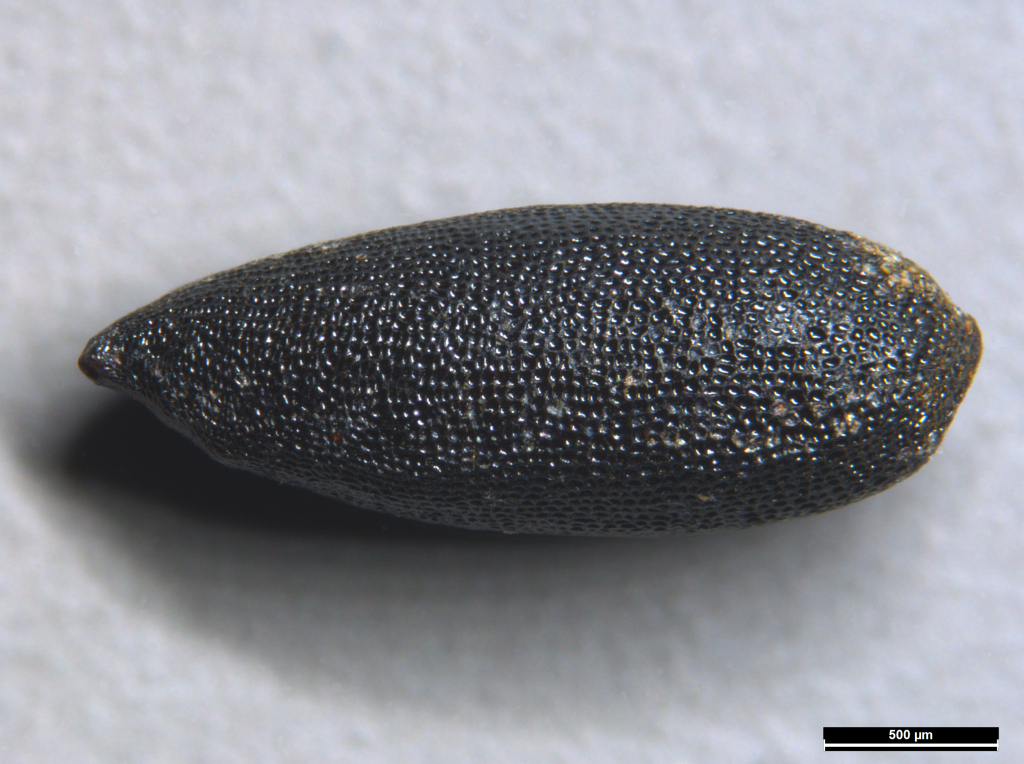Pimelea curviflora subsp. fusiformis
N.G.Walsh & E.M.SchulzWeak, twiggy subshrub to ca. 30 cm high and often as wide, usually single stemmed from base and regenerating from seed rather than resprouting after fire. Leaves 5–9 mm long, 1.5–2.5 mm wide, slightly paler beneath, sparsely appressed hairy on lower surface, glabrous or with a very few hairs on upper surface. Inflorescence of compact, 2–5-flowered clusters; flowers yellow, often reddish toward the tip; perianth 5–8 mm long at maturity with appressed to slightly spreading hairs 0.2-0.6 mm long, ovary portion 3–4 mm long, style-portion 2–3 mm long; sepals not or hardly spreading, 0.6–1.1 mm long. Seed fusiform, 2.8–3.2 mm long, acute or subacute, ±equally pointed at either end and widest at the centre; seed coat finely alveolate with alveolae more or less isodiametric. Flowers Oct–Jan.
GipP, CVU, EGL, EGU, HSF, HNF, MonT. Also New South Wales (1 record). Known from a few scattered localities in Gippsland between Gembrook and the NSW border (e.g. Valencia Creek, Cann River, Goongerah), where it occurs mainly in dry open forest or woodland, usually with a sparse ground layer and often on rocky ground.
Previously treated within the informal taxon P. curviflora var. aff. subglabrata but this has been shown to comprise two distinct taxa, both now treated as subspecies of P. curviflora (Walsh & Schulz 2020).
 Spinning
SpinningWalsh, N.G.; Schulz, E.M. (2020). Notes on Pimelea curviflora and P. micrantha (Thymelaeaceae, Sect. Epallage) and recognition of two new subspecies of P. curviflora. Muelleria 38: 111–123.
